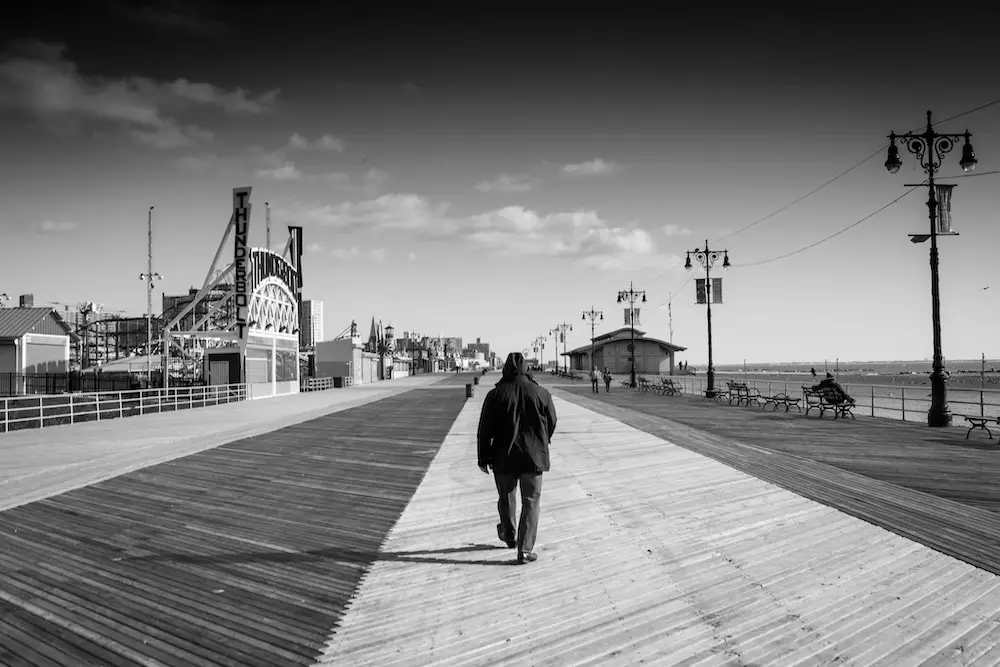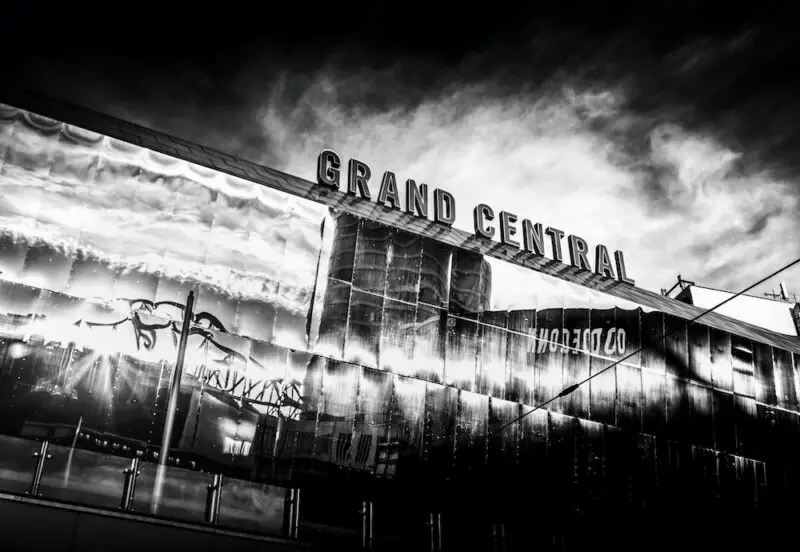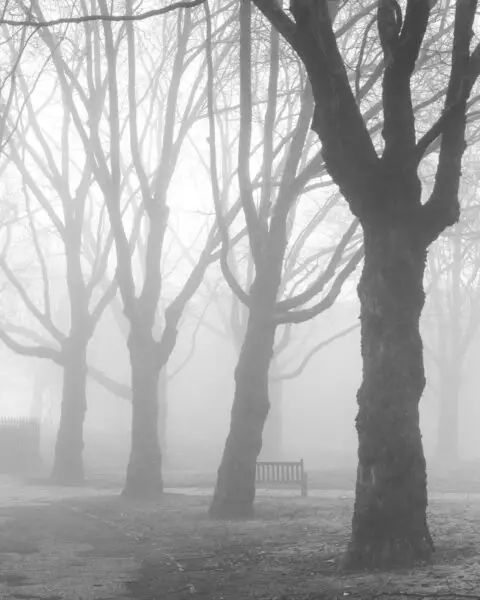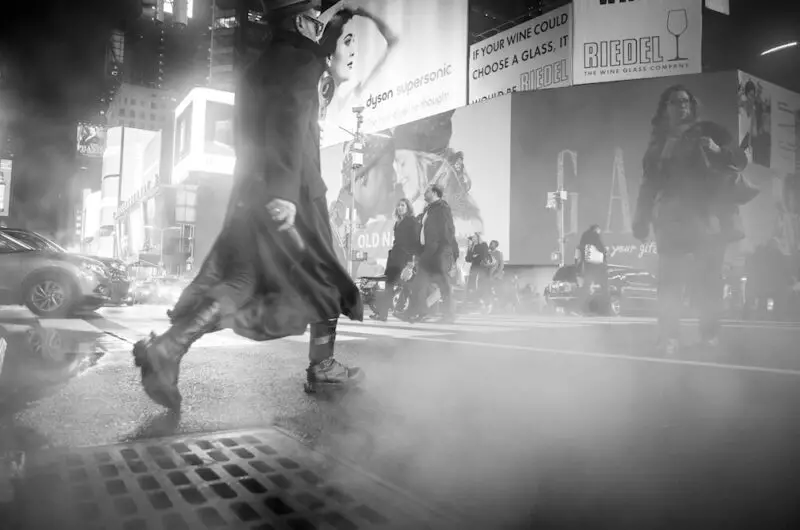Call it what you want, but black and white photography is nothing if not impressive.
In a world where a “realistic” look including lifelike colors has been the norm for so long, many beginner photographers of today have never really felt the need to view monochrome as anything but an anachronism.
Time and time again, contemporary black and white photography peek out of the shadows to challenge all of these preconceptions. Monochrome art can evoke emotions and display reality in a way that color just isn’t capable of.
In 2022, completely against the grain of most of history, most of us are capable of easily choosing between color and black and white at no real cost either way.
Whether by choosing in-camera before we line up our shot or in post-processing afterward, monochrome is only a click away.
But ironically, this freedom is what has only made choosing between color and black and white photography that much harder. Many evade the choice by just sticking with color out of habit, but should you? And how does black and white photography differ from what you might be used to?
In this guide, I am going to try and answer these (and many more) questions for you. I’ve worked extensively both in black and white as well as in color, and I’ll try to make it as easy as possible to decide which is best for you in which circumstance.
- The Importance of Black and White Photography
- Mastering Black and White Photography From Scratch
- Understanding Composition
- Using Filters
Why Does Black And White Photography Matter?
First, we need to address this most fundamental question. Why even bother with black and white in a world where color photography is the norm?
Well, there are many ways and layers through which to understand this question. Ultimately, there is no one real answer, and some will conclude after reading this guide that black and white photography just isn’t it for them and their work.
In the end, there is only one way to find out: by taking a good, long look at what makes black and white photography so special, and thus get an understanding of its benefits and shortcomings.
Simplicity
This one might be a tad obvious, but many photographers really underestimate how much it can be worth to break a composition down to its most essential ingredients. Instead of “over-designing” our shots, limiting ourselves to the elements that work best can often bring out much better material.
And that is where black and white photography really shines. Because it takes out the element of color, replacing it with a multitude of shades of white, grey, and black, it alters the way our eyes travel across the frame. Particularly landscapes and portraiture benefit from this.
In color photography, we often face an issue where too many shades, intersecting lines, or clashing tones can render an image “muddy” or overblown. The same photo in black and white can look effortlessly elegant and clean by comparison.
History
More and more, contemporary photographers are revisiting monochrome as a means of getting in touch with the history of the medium.
This doesn’t have to be all-analog, of course. Regardless of the retro “look”, the majority of black and white photography in 2022 is still produced digitally.
There is no denying that for the vast majority of photography’s lifespan, it has existed (mostly) as a monochrome art form. Sure, there have been many different variations and many different chemical processes that each produced a different style.
The classic sepia tone of a carbon print is clearly different from a Vandyke or Daguerreotype, but they all share one defining characteristic: colors are represented as hues of light and dark.
This one common aesthetic feature is what defines the “black and white look”, and it is what many associate with photography from years gone by.
Ease Of Use
This may be less of an important issue today than it used to be during the film era, but it remains worth mentioning.
For most of its history, black and white film was more popular than color. One of the reasons for this was the fact that monochrome film is more forgiving to shoot with. It has a much higher exposure latitude, meaning you can push or pull more generously without ruining the image in development.
Cost also played a big role.
Until the 1970s, very few non-professional photogs could really afford to shoot all or most of their work in color. The by far biggest reason for this was the enormous price of color film (both the actual rolls as well as development) compared to monochrome.
Today, all these complexities of the choice between the two have become completely redundant for digital shooters. Of course, whether we work in black and white or in color on our DSLR or mirrorless camera carries exactly zero difference price-wise.
And unless we use separate dedicated cameras for color and black and white photography, the exposure latitude will be the same for both, too.
However, there remains somewhat of a gap between the two as it relates to ease of use. This has to do with the idea of aesthetic simplicity that I touched on above.
Simply put, by getting rid of the element of color and reducing it to a spectrum of grays, blacks, and whites, we can focus on the essentials of our photography and become more aware of the rules of exposure.
For beginners and those who want to hone their skills, black and white are still recommended for this reason – and rightly so!
Standing Out
And finally, perhaps one of the most simplistic reasons for choosing black and white photography: it’s just different! Especially today, where the majority of photographs are in color, switching over to monochrome can just help your work stand out.
Even mundane shots can look more interesting just through this simple – yet powerful – aesthetic change.
Mastering Black And White Photography From The Ground Up
So, what if you want to get into black and white photography, but don’t know where to start?
Well, there’s no better time to jump into it than now! Just like photography as a whole, working in monochrome has only gotten radically more accessible in recent years.
How To Shoot In Black And White
At a basic level, there are two ways to shoot in black and white on a digital camera.
First, you can set up your camera to shoot monochrome. There will usually be some section in the menu system dedicated to this. If you’re not sure where to look, the owner’s manual might help.
On mirrorless cameras, this gives you a great creative advantage. Namely, it will set your viewfinder display to greyscale, so you can view your frame exactly as it will appear. This can help with “thinking” in black and white. Even on a DSLR, you at least get a black-and-white rear LCD, including Live View.
Second, you can shoot in color, and then convert your photos to black and white later. This has the added benefit of letting you choose which version to keep. After all, it’s perfectly easy to take the color out of a photo. However, colorizing black and white pictures is infinitely more complicated to the point of being impossible for most amateurs.
There is a catch to this, though: if you shoot in RAW, then the above dichotomy falls apart.
RAW files always retain full color information, regardless of whether you shot in black and white or not. Hence, you can set your camera to monochrome mode, shoot in RAW, and then still re-convert some shots back to full color if you feel like it.
Of course, really mastering black and white photography is about so much more than just knowing how to get the photos to come out in monochrome. Below, I will go over some basic tips and tricks that you can use to practice your skills when working in this medium.
Realize The Importance Of Shadows And Contrast
In black and white photography, nothing stands out more to the viewer than the contrast and the play between light and shadow. The problem is that the untrained eye might not even realize how these factors are so important.
Ever asked someone not whether they like a certain shot, but why? It’s not so often that a non-photographer, or someone who isn’t very well-educated in the visual arts, can precisely articulate that answer.
It is in this way that we accidentally end up ignoring things like shadows and contrast. For mastering black and white photography, truly understanding these elements is something you can’t skimp on.
A shot that makes great use of contrasts immediately stands out. It’s what you might call “powerful”, “evocative”, or “emotional”. This is because in black and white, contrasts are all you got – the whole frame is one big interplay between light and dark.
How you arrange and orchestrate those light and dark parts matter more than anything else (except the composition itself).
Note that light and shadow are things that are fundamentally in your control. That is, your framing of the subject largely determines how much or little they dominate and affect the photo. Meanwhile, contrast is something of a compound – on the one hand, it derives from your composition, and on the other, it also results from the choices you make in post-production.
Spending your time perfecting your black and white photography skills will train you to never look at a shadow in your viewfinder as “just a shadow” ever again. That much is for sure.
Understand Composition
You might think you already know at least the basics of composition. Rules of thirds here, geometric symmetries there – how hard can it be? Of course, I’m joking a little.
Composition is one of those things that even the most lauded pros among us never stop learning and improving. It’s a life-long skill and one that you can probably never fully master.
Beyond that fact, there is one thing about composition that many don’t consider though. Namely, how composition differs (sometimes very greatly!) between color work and black and white photography.
One of the most obvious examples is in portraiture. In color, you can use vibrant features such as piercing eyes to draw attention and bolster your composition. The Afghan Girl pulled this off in such a way that it became the photograph to define a whole generation.
However, in black and white this doesn’t work the same way. Instead, you need to compose differently – using the interplay of light and shadows on the subject’s face, for instance.
Expressions, poses, and the contrast between skin tones and backgrounds can also weigh much more heavily than they would in regular color photos.
Of course, this goes way beyond basic portraits. Black and white composition affect every area and genre of photography, and you will need to learn to adjust to it with time.
The best black and white photographs aren’t shot as desaturated color pictures; they feature a unique composition that amplifies the strengths of the medium.
Learn How To Use Filters
Ah, filters. What happened to you, dear friends?
From the very inception of photography as we know it in the 1800s up to the late 20th century, nearly every serious photographer out there always carried a bag of filters for their lens wherever they went.
Today, the practice has nearly become extinct. Every now and then you might see a guy with an oddly-colored front lens element and go, “Oh right, filters – those exist,” but it is becoming exceedingly rare.
A Quick History Lesson On The Death Of The Color Filter
Why did this happen? A big factor in the death of the color filter is, once again, the rise of color photography. In the late 20th century, so many began dabbling in color photography that the whole market shifted in their favor.
Often, these were families and inexperienced photographers who were drawn to the idea of producing “lifelike”, simple snapshots.
Filters went away during this time because, when working in color, they are not strictly necessary.
It is perfectly doable to create a great shot in color without ever using a filter. The only exceptions are certain environmental conditions which might call for, say, a haze filter, or a polarizing filter.
But then again, the vast majority of photographers, particularly casual users, are unlikely to care.
Another factor in the slow shift away from filters was the SLR boom. While single-lens reflex cameras had been the mainstay among professionals since the early 60s, it took a lot longer for them to catch on among casual shooters.
Until the 80s, the vast majority of point-and-shoots and other low-end, simple cameras were either rangefinders or viewfinder cameras.
Why does this matter? Well, on an SLR, unlike its predecessors, putting on a filter darkens your viewfinder image. If it’s a color filter, it will also give everything in your frame a noticeable tint.
On a rangefinder (or any other camera where you don’t compose through the lens), putting on filters doesn’t affect your view of the subject in any way.
Whatever their benefits might be otherwise, shooters interested in simplicity and ease of use saw this as a clear con and many stopped buying filters as a result.
Filters And Black And White Photography
So, in short, many photographers abandoned filters towards the end of the last century because they were inconvenient to use, and didn’t really provide too many benefits for color photography. If this is true, why do we need to care about them now?
Well, it’s a simple reason, really. The same reason why filters had been such a common sight in every camera bag until color won the popularity contest.
Their drawbacks and inconveniences for color work notwithstanding, the same does not hold true for black and white photography.
If you really want to bring out the best in your shots, using the proper filters is essential. That has never changed, and never will, regardless of fashion and trends in the industry.
While it is true that you can approximate the effects of filters if you’re smart enough with post-processing software, nothing can beat the real deal.
Types of Filters
The main filters that we use for monochrome photos are yellow, orange, and red. Green also exists (among many others), but is not quite so common.
Yellow filters increase the visible separation between the sky and the foreground. They make clouds “pop” a bit more, and also improve the rendering of skin tones. Most photographers that use color filters consider the yellow one their default since it is the most versatile for most genres of photography.
Orange filters are very similar, but their effects are more strongly pronounced. They make skies appear dark whilst further separating the clouds visually.
Red filters are even stronger and are often the number one choice for “dramatic” or surrealist effects. Skies can appear almost entirely pitch-black. Facades of buildings, for instance, will display extreme definition and separation between different materials, seams in between bricks, and so on.
Green filters are very popular in nature and landscape photography. This is because they can prevent scenes heavy in foliage and greenery from coming out mushy or overblown. They add definition to leaves, trees, et cetera while preserving detail.
How to Use Filters for Black and White Photography
To simplify, there are two basic systems of mounting filters that have sprung up throughout the history of photography. Yep, just two. The first, called the “Series” system, was in use from the late 1930s up to the 70s.
In simple terms, to use a Series filter, you have to know your lens series (which will be denoted by a Roman numeral), and buy an appropriate adapter ring of that size. The adapter ring fits onto the front element. The filter then pops into the adapter ring, secured by a separate retainer.
The advantage of this is that you can mix and match different kinds of filters (and other lens accessories) without paying attention to the brand, make, or model. This standardization is partly why series filters are still used today for motion picture camera systems.
The series system used to be very widespread but eventually became obsolete just around the time that SLRs got popular.
Since then, we have been using filters that screw onto lens-mounted threads. All you need to know is your lens’ filter thread size, and any filter of that size will fit.
The one downside to this thread-based system is that it is up to the lens maker to ensure that most of their lenses have the same threads. If they don’t, you will need a different set of filters for each!
For black and white photography, I recommend a basic set of filters (yellow, red, orange) for starters. Make sure to buy a set that matches your thread size (denoted in millimeters), and you’re good to go!
The Bottom Line On Black And White Photography
In the end, shooting in monochrome is like any other photographic discipline, genre, or technique. That is, it’s all up to you. For some, taking away color will intrinsically remove some quality from their images that they won’t be able to do without.
For others, switching over to black and white can prove liberating, even eye-opening in its countless possibilities.
Sure, black and white is, in a way, a world of its own. It comes with many challenges, and in some sense, it is like learning photography all over again from scratch.
But on the other hand, there are some truly beautiful shots that can only be pulled off in the absence of color. And today, where anyone with a digital camera can try out monochrome at no cost, it can’t hurt to try.





